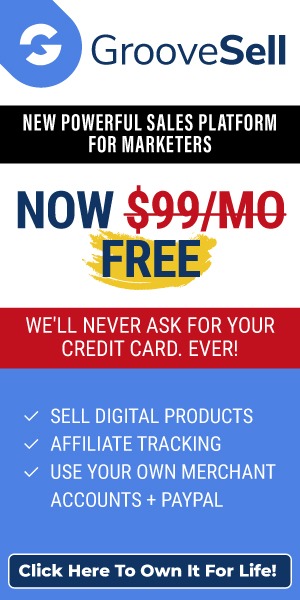
The opportunity to sell information and turn it into a living online is immense (Global Industry Analysts projects it to be a $241 billion industry by 2022).
All we have to do is look at marketplaces like Kindle, ClickBank, Udemy and others like it to see online teaching is a booming business.
Now when you think of those platforms, we see many different price points.
On Kindle, you can get information for as little as 99 cents or even for free.
And of course, marketplaces like ClickBank and Udemy offer products at a wide variety of price points.
And the reason is simple.
All price points work, but there is something to be said about high ticket programs.
I’ve been selling products at a wide variety of price points and I always come back to high ticket items because they boost my business greatly.
If you’re thinking of getting into high ticket online courses, here are 4 lessons I’ve learned that I think you’ll find helpful too.
#1: Your Happy Customers Want More
Selling lower ticket items is a great model and absolutely nothing to sneeze at.
Most of my products are low ticket.
It’s an easy way to get a lot of the customers through the door and give them a taste of what you have to offer.
Of course, since you’re delivering stellar content and guidance, they’re going to want more and the more they already enjoy your material, the more willing they’ll be to invest larger amounts into their education with you.
In short, your happy customers want more, so give it to them!
#2: You Have to Sell Less to Make More
This is a simple math equation, but in addition to having to sell less to make more, it’s often easier to sell a higher ticket product.
When you sell low ticket products, you always have to make up for it in volume.
If you have the list, advertising dollars or affiliates to help you do that, it’s certainly doable.
When you only have to sell 10 products at $197 to make $1,970…that seems a whole lot more doable than 115 sales at $17, doesn’t it?
#3: Make it As Easy as Possible
So how do you differentiate between a $17 and a $197 product? How do you convince your customers it’s worth the investment?
Well, there are a lot of techniques you can employ, but one thing you should focus on is making participating in your program as easy as possible.
What can you do to get them to results with the least effort possible? Nobody wants things difficult, so figure out what you can do to do some of the work for them.
Here are 3 ideas to get you started:
Include Templates: If you’re teaching them to reduce their debt, make budgeting templates, fill-in-the-blanks letters to creditors or whatever they need to accomplish the goals for your course.
Add Interaction: Making your course interactive provides built-in accountability and they’re more likely to take action.
Whether it’s talking with you about their progress or participating in a community related to your program, when your student feels like they have someone waiting for them to take the appropriate steps, they are more likely to take them.
Do Some of the Work: Offer done-for-you components, where applicable…and charge a premium for them.
If you’re offering a weight loss program, offer custom menus or exercise plans.
Depending on how much you’re already charging for the program, these extra services might be at a higher membership level or can be offered as an upsell.
#4: High Ticket Customers are AWESOME!
Talk to anyone who has sold high and low ticket products and they’ll tell you their high ticket customers are almost always more easy going.
Oddly enough, people who pay less often have higher expectations, are less patient with any issues that may come up and can be a royal pain in the butt.
Obviously, that’s not everyone…but it’s a generality that always seems to ring true.
It’s likely because the people who are willing to pay more also see greater value in what they purchase.
Someone who is only willing to pay $17 for your expertise doesn’t really value it…and they’re more likely to have higher, and often unrealistic, expectations.
In short, selling higher ticket products can make your life a whole lot easier and your business much more lucrative.
What to Do Next:
We’ve got the training you need to set up a high-ticket training product that teaches your students to finally get organized, productive and achieving goals they never thought possible.
We’ve created all the training and marketing materials.
All you have to do is join us for a few training sessions, so you can be the subject matter expert and confidently deliver the training to your students.
High-Ticket Online Training Program Planning Checklist
If you’re planning to launch your own online training program, it’s important to plan out your content, so that you have the best student experience possible.
The more you can add interactivity and practical applications, the more you’ll be able to charge for your training and the more likely your satisfied students are to recommend you to others.
This checklist focuses on providing the high-level experience for your students, so in turn, can sell your offer at a high ticket price.
Choose Your Interaction Level
You have a number options when it comes to creating interactivity for your students.
Keep in mind that the more personalized and private the interaction is, the more you can charge.
However, realize that more interaction increases your workload as well.
Find a balance between what suits your lifestyle/workstyle and what your customers are craving.
Some Options, with Increasing Level of Interaction:
Members Forum: You can allow your customers to interact with one another, alleviating some of your responsibility.
The challenge with this method is getting the discussion going and maintaining it.
To do that, you’ll need a large number of customers, possibly recruit others to get involved and also start/participate in discussions.
Blog: Another way to ensure that your customers can ask the questions they want and get the feedback they are looking for is by delivering the content through a students-only blog.
It alleviates some of the pressure in getting an active forum going, but ensures that students can ask you questions and get feedback on specific lessons through the comments area of the blog.
Social Media Groups: You can use tools like Facebook Groups to create interaction.
The bonus is that you’re communicating in a place people tend to visit often, provided they have a Facebook account.
Keeping interaction in a group can be challenging, just as anywhere else, but it’s an easy option for connecting.
Webinar: You can hold periodic group sessions via webinar.
Everyone can listen in, view your screen or web cam and have the opportunity to ask questions and interact.
Private Discussion: Many students may not want to discuss things publicly, but want more one-on-one guidance from you and the opportunity to discuss their details personally.
Of course, this comes at a more premium price and you can set it up in a few ways:
- Email: If you use email, you may want to set some limits on the number of emails/questions per day and make sure your student is aware how frequently you will respond to emails and make sure you do it reliably.
- Private forum: This works much like email, as it is private and through text communication, but the benefit of having an online forum (using the private function of a message board) is that your discussion is recorded in one place and your student will have an easily accessible record of what you talked about. Using a private forum also helps you avoid possible email filtering issues. While email may not get through, your student can log into the forum and see your responses any time.
- Office hours: You can hold daily or weekly office hours, where it is the responsibility of the student to contact you during this time, whether it’s by telephone or instant messaging. This option is likely less work for you than scheduled phone calls, but it may be more challenging for your student to stay motivated and keep up with the course.
- Scheduled phone calls: Your students choose a time to talk to you, based on available time slots you provide. This keeps your student more accountable and more likely to complete the course.
- Scheduled instant messaging: If the phone isn’t convenient for you or your student, you can also schedule your meetings through instant messaging. It’s a little less personal than a phone call, but is more interactive than email.
Content Organization
Before you start writing, recording audio or taking any video recordings, decide on the specific topics your information product is going to cover and how you are going to organize the information.
What to Think about When Deciding on Specific Topics:
o Look at what information is included in other similar information products. How can you differentiate yourself from them?
o Think about your target market and what their biggest struggles are. How can your product address that?
o Survey your readers and customers on what they would like covered. You can often create a whole product out of customer questions.
Organizing the Information:
o Intervals. Since your course is interactive, you may want to release specific chapters/modules at certain intervals.
For example, you may want to make it a 4- week course and deliver a new lesson each week.
Or you may want to break it up into smaller chunks and give a lesson every day to ensure your students are taking action and moving toward their goal each day.
o Homework Assignments. Will your students need to complete specific homework assignments or will you just be available for feedback and questions?
By giving specific homework, you will have more work to do in reviewing it, but you provide your students a more practical experience and likely more success from the course.
o Media. Decide what type of media you will use to deliver the lessons.
You may even choose to use more than one for each lesson.
For example, you might include a recording and a written guide, so students can choose their preference. Or you might conduct a live webinar and offer transcripts and recordings for those who can’t attend live.
Media Options:
You have plenty of options when it comes to the types of media you can use in your product. Having a variety of media formats has a number of benefits including:
o Increase perceived value of your product.
Instead of just getting a PDF document, your reader gets a variety of information in different formats, so they naturally feel it’s more valuable.
o The ability to cater to people’s different learning preferences and disabilities.
While some people may like reading, if you can provide the same information via audio recording, you can capture those customers who want to take your information product and listen in their car, while working out, etc.
o Some subjects are easier to teach in writing.
While others are easier to teach with videos or screenshots, for example.
You can choose the appropriate media for each part of your product OR you can offer each part in a variety of media formats.
You’ve got plenty of flexibility.
Some Options:
o Online content (HTML)
o PDF documents with text
o PDF documents with screenshots/photographs
o Teleseminar/Webinar
o One-on-one phone calls
o Instant Messaging
o Email
o Live action videos
o Screen capture videos
o Slide presentation videos
o Audios
o Transcripts
o Email Contents
o Photographs o Illustrations o Charts
o Tables
o Flowcharts
o Mind Maps
o iPhone and other mobile apps
Do Some of the Work for Them:
In addition to straight content, consider including useful tools for your customers.
Think about the subjects you are covering and how a tool could help your reader actually apply that information and get results from your product.
For example, you can include templates.
If you’re teaching them to reduce their debt, make budgeting templates, fill-in-the-blanks letters to creditors or whatever they need to accomplish the goals for your course.
Some Tool Ideas:
o Worksheets
o Fill-in-the-blanks
o Spreadsheets
o Checklists o Software o Patterns
o Resource lists
o Glossaries
o Quizzes
o Diary/Journals
o Editable Charts, Tables, Flowcharts and Mind Maps
You can also include done-for-you components, where applicable…and charge a premium for them.
If you’re offering a weight loss program, offer custom menus or exercise plans.
Depending on how much you’re already charging for the program, these extra services might be at a higher membership level or can be offered as an upsell.
Download Set Up:
To help your readers use your product, plan how you will have your customers access their product.
How you deliver your information will likely depend on how you will organize your interaction.
A download area where members can see call-in details, call schedules, etc. is likely to be advantageous.
A Few Options:
o Single document download: If your product is just one file, you might give your readers a link to download it.
o Contents in a zip folder: If you have multiple files, you might want to put it in a zip folder. If you choose this option, make sure you include an instructions document, so your customer knows how to use the product.
o A download area: An advantageous way to deliver your product is to give your readers access to a download area.
This can be an HTML page where you welcome your customer and give them instructions on how to use the product.
This method has the advantage of creating a more personal experience, instructions are very clear and your download area is the perfect place to promote back end products.
What Next:
We’ve got the training you need to set up a high-ticket training product that teaches your students to finally get organized, productive and achieving goals they never thought possible.
We’ve created all the training and marketing materials. All you have to do is join us for a few training sessions, so you can be the subject matter expert and confidently deliver the training to your students.












